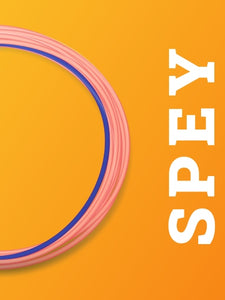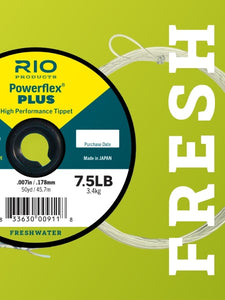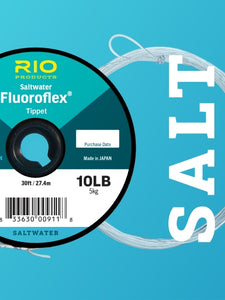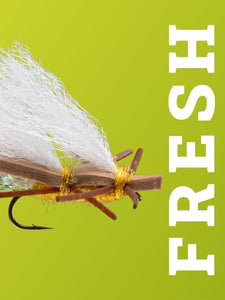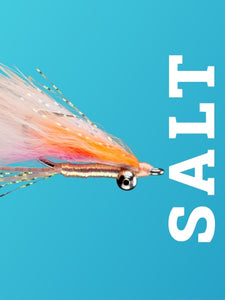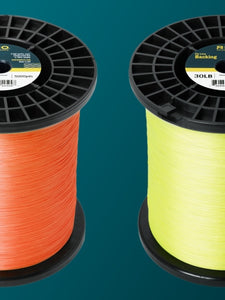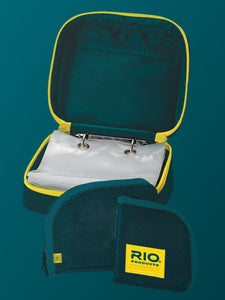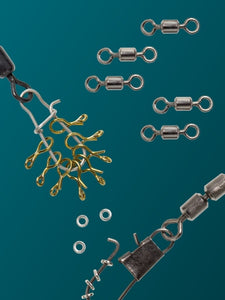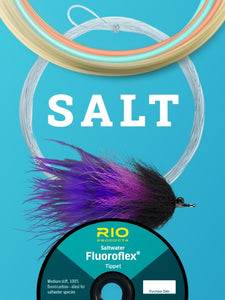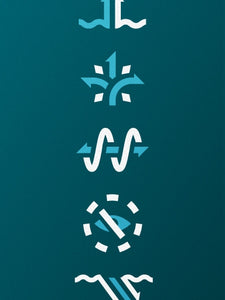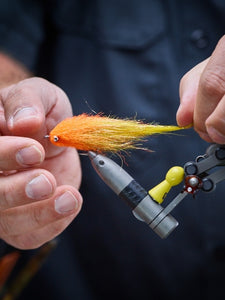In mid to late September, one of the best things about the PNW kicks off: river fishing for fall salmon. There are five different species, but the two fish that most anglers chase are King and Coho salmon. Although the majority of anglers go after these two incredible fish with conventional gear, it's a great time to pull out the two-hander to have a chance at the GRAB OF YOUR LIFE by using a swung fly. Here's how to make it happen.

How To: Swinging For Pacific Salmon
Captain Lael Johnson November 09, 2023
FISH RIVER LOCATION
To consistently have success hooking salmon on the swing it is essential to understand where the fish will be traveling through the river and what speed of water will move your fly fast or slow enough to have them react to your presentation.

1. Look for the proper water depth.
An ideal water depth for targeting salmon on the swing is 3 to 10 feet. Water deeper than 10 feet leaves a lot of room for a fish to move away from your fly rather than your fly invading their territory and pressuring them to strike.
Pro-tip: Ensure your running line is strong enough to break your tippet and not at the loop connected to your head. If it fails at this connection, rather than your fly connection, say goodbye to your head, sink tip, tippet, and fly. Losing a fly keeps you in the game; losing your entire setup puts you out of business.

2. For most river situations, you must look for water with structure.
Boulders or fallen trees are the typical choices. The critical thing to look for when fishing a spey rod around these types of river features is to ensure you can get as close to it as possible without hanging the fly on it. Your angle of the cast, sink tip choice, fly selection, and leader length will determine how you can achieve this.

3. Look for abrupt changes in water depth and locations that will make the fish hold or stop.
Above and below swift water or significant changes in the river's gradient are great places to look. Another important location to look for holding fish is to find a sharp bend in the river or a 90° turn. Typically, this location has a change in water speed and depth, and you can often find fish holding above or below this feature.

4. Fish movement, jumping, or splashing every few seconds or minutes.
Seeing this lets you know that fish are present; now all you have to do is catch one. The more fish you see jumping or splashing the more fish you should be able to encounter. When fishing for steelhead, we are only sometimes able to see them reveal their location with a splash or roll, and even if you don't, it doesn't mean they aren't there; you have to have faith you chose the right section of water. When it comes to salmon, if you don't see any fish movement after 30 minutes they just aren't around or in numbers significant enough to bother throwing a fly at them.

Rod Selection
Having the right rod to turnover 10 to 15 feet of at least T-14 and possibly T-20 is key. You can make your own with "RIO's InTouch Level T Tips," or use "InTouch Versitips". Pairing these weights of sink tips with a fly big enough to get the attention of a Chinook requires at least a stout 8wt. So leave your 7wt Scandi set up at home. That is not the tool for this job. If I were to recommend my favorite rod for targeting salmon it is undoubtedly a 9wt. The length is up to your casting style preference but look for something 12'6' to 15'. I fish with a 14' footer most consistently because I want to put the fly anywhere I want it with the ability to throw a long tip if needed. Remember, this rod power suggestion is not really for the size of the fish; it's for the rod's strength to cast the necessary equipment to deliver the proper presentation.
Head Selection
Use what you have and if you do not know what a specific head does, don't use it and lose it. What I'm trying to get at is: if you don't understand the application of what an intermediate line can do and where in the river it can be helpful, don't put it on, wrap it around a tree, snag a boulder, or hook bottom every couple of casts. Stick with your average floating head and work with different sink tip lengths and grain weights. This can catch a lot of fish and keep you out of trouble.
For those who know—intermediate lines are the way to go-like RIO's "InTouch Skagit Max GameChanger". Paired with the correct tip it allows you to fish a lot more water that is faster and deeper so you can find fish when others can't. Some would think that this only applies for high water situations and fast flows, but it can be beneficial for low flows when the fish are holding in swift water that provides them the most cover during low water. There are many different choices in densities of the line, but stay with a head that gets slightly below the surface. Heavier line selections are meant for really fast water and aren't a good choice to have on your rod all day. So when choosing the right do-it-all in an intermediate line, look for one that allows your fly more time to fish, and not swing through too fast.
Sink Tip Selection
In the game of swinging for salmon choosing the proper sink tip will keep you on or off the fish. Your tip choice is more important than every other piece of equipment when targeting salmon on the swing. If this selection is made incorrectly you will watch a bunch of fish jump and splash without your line ever coming tight.
So, what do you need to make it happen?
* 10 - 12.5 feet of T-11
* 10 - 12.5 feet of T-14
* 10 - 12.5 feet of T-17
* If you really want to get down and have the right length rod, use 15-foot "InTouch Sink tips" and maybe T-20
* RIO "Skagit MOW" tips are a great way to start using heavier tips, so you do not have to use the total weight of a 10' or 15' tip; you can choose the proper amount to work your way closer to the bottom.
To finish things up and point you in the right direction, using the right head & sink tip matched with the proper angle of your cast will for sure get you into some salmon. If you are lucky enough to come tight, give them a solid hookset. This isn't summer steelhead dry line fishing for 6-pounders. Put the wood to them and have the fight of your life!


